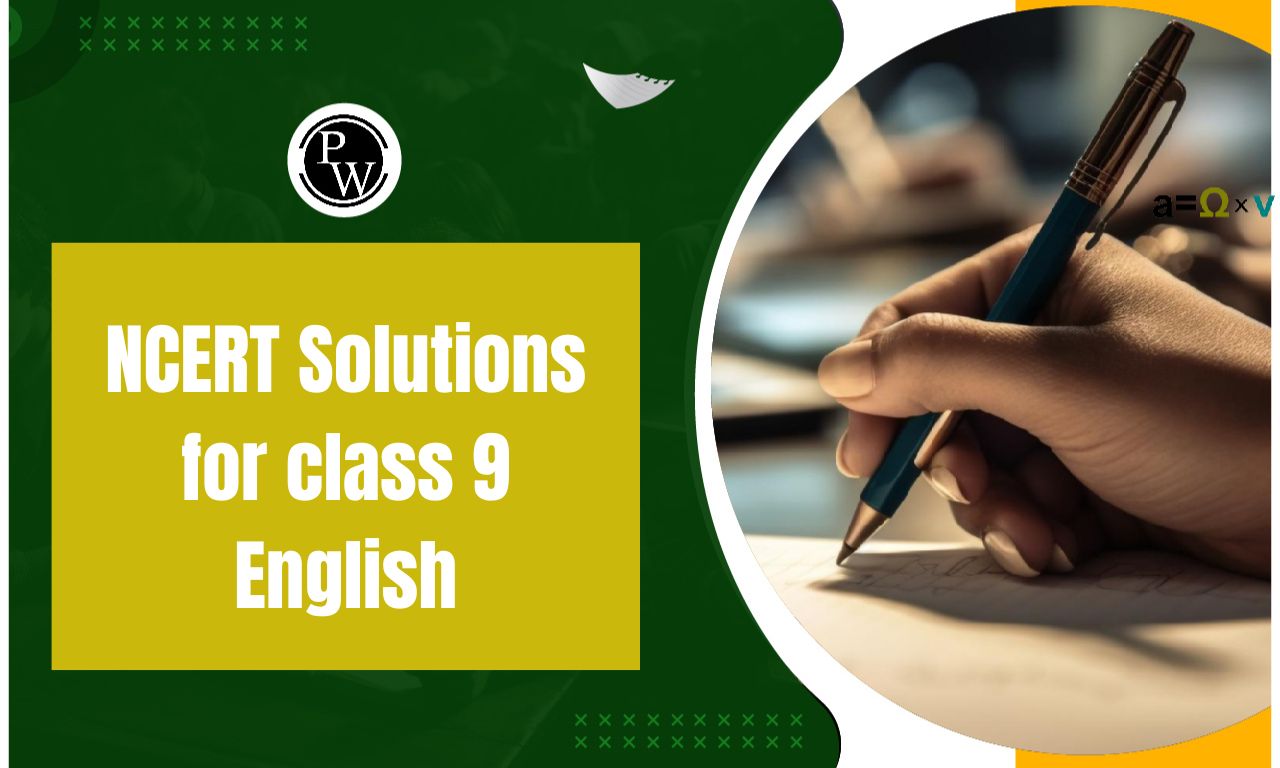
CBSE Class 9 Political Science Notes Chapter 2: CBSE Class 9 Political Science, Chapter 2 on Constitutional Design, teaches students about the Indian Constitution's basic principles and structure. It explains how the Constitution was created to ensure fairness and equality in India, considering its diverse society.
Students learn about the framers of the Constitution, their goals, and the important discussions that influenced its content. The chapter covers fundamental rights for citizens, the role of the courts, and how power is shared between the central government and states. Studying Constitutional Design helps students understand democracy, the rule of law, and how India protects everyone's rights.CBSE Class 9 Political Science Notes Chapter 2 Constitutional Design Overview
These notes for CBSE Class 9 Political Science, Chapter 2: Constitutional Design, are created by subject experts from Physics Wallah. Students will learn about fundamental rights, how power is shared between the central and state governments, and the role of the judiciary in ensuring justice. Studying Constitutional Design helps students understand how democratic principles shape India's government, and teaches them about their rights and duties as citizens."CBSE Class 9 Political Science Notes Chapter 2 PDF
You can find the PDF for CBSE Class 9 Political Science Notes, Chapter 2: Constitutional Design, by clicking on the link below. It covers topics such as how the Constitution protects people's rights, how power is divided among different levels of government, and how checks and balances ensure accountability. Understanding this chapter helps students learn about India's democratic system and their roles as responsible citizens.CBSE Class 9 Political Science Notes Chapter 2 PDF
CBSE Notes Class 9 Political Science Chapter 2 Constitutional Design
Here we have provided CBSE Notes Class 9 Political Science Chapter 2 for the ease of students so that they can prepare better for their exams.Constitutional Design
Democratic Constitution in South Africa
Apartheid
Apartheid in South Africa was a system of racial discrimination imposed by white Europeans starting from the seventeenth and eighteenth centuries. European trading companies used force to colonize South Africa and became its rulers. Under apartheid, people were categorized based on their skin color, with whites considering themselves superior. Non-whites, including blacks, coloureds, and Indians, were treated as inferior, denied voting rights, and barred from living in areas designated for whites. Resistance against apartheid grew, particularly from 1950 onward, led by the African National Congress (ANC). Nelson Mandela, among eight leaders, was tried for treason by the white South African government in 1964 and sentenced to life imprisonment for opposing apartheid.Giving Rise to a New Constitution
As protests against apartheid intensified, the white government realized it could no longer suppress the black population through repression alone. In response, the regime began to change its policies: discriminatory laws were repealed, the ban on political parties was lifted, and restrictions on the media were relaxed. Nelson Mandela was released from Robben Island Prison after serving 28 years. Finally, on midnight of 26 April 1994, apartheid officially ended, marking the beginning of a multi-racial government in South Africa. With the dawn of democratic South Africa, the former oppressors and leaders of the freedom struggle came together to draft a new constitution. This constitution granted citizens extensive rights, unparalleled in many other countries. They emphasized inclusivity, ensuring that all voices were heard in finding solutions to the nation's challenges.Why the Need for a Constitution?
The example of South Africa illustrates why a constitution is essential and what it accomplishes. In the transition to democracy, both the oppressors and the oppressed sought to coexist as equals. Each group aimed to protect its interests, including social and economic rights. Through negotiations, a compromise was reached: the white minority accepted majority rule and the principle of one person, one vote. In return, the black majority agreed to respect minority rights and property. To ensure this agreement was upheld and to build trust, they needed a set of rules that all parties would follow without exception. These fundamental rules, which no government can ignore, are known as a constitution. In every country, people are diverse with differing opinions and interests. A constitution acts as the supreme law that defines the relationships among citizens and between the people and their government. Here's what constitutions achieve:- They outline how the government will be formed and who will wield which powers.
- They set limits on government authority and outline the rights of citizens.
- They reflect the collective aspirations of the people for creating a just society.
Making of the Indian Constitution
Benefits of CBSE Class 9 Political Science Notes Chapter 2
- Understanding Democratic Principles : Students learn about the principles that form the basis of a democratic government, such as equality, justice, and rights.
- Insight into Constitutional Framework : They gain insight into how constitutions are framed, the key components of a constitution, and why it is necessary for a country to have a constitution.
- Importance of Rule of Law : Students understand the importance of the rule of law in ensuring that governments function within legal limits and respect citizens' rights.
- Critical Thinking Skills : Studying constitutional design encourages critical thinking and analysis about the structure and functioning of governments.
- Historical Context : It provides a historical context, such as the making of India's Constitution, which is essential for understanding the evolution of democratic institutions in the country.
- Awareness of Fundamental Rights : Students become aware of their fundamental rights and the mechanisms through which these rights are protected in a democratic setup.
CBSE Class 9 Political Science Notes Chapter 2 FAQs
What is a Constitution?
A constitution is a fundamental document that lays down the framework for governance, outlining the rights and duties of citizens, and defining the powers and limitations of the government.
Why do we need a Constitution?
A constitution is important to provide a framework for the functioning of government, ensure the protection of citizens' rights, promote equality, and establish mechanisms for resolving conflicts.
What are the key features of India's Constitution?
India's Constitution includes key features such as sovereignty, secularism, democratic principles, fundamental rights, directive principles of state policy, and a system of checks and balances among the executive, legislature, and judiciary.
How was India's Constitution framed?
India's Constitution was drafted by the Constituent Assembly, which included representatives from various sections of society. It was chaired by Dr. B.R. Ambedkar, and after several rounds of discussions and amendments, it was adopted on November 26, 1949, and came into effect on January 26, 1950.
What are the principles of democratic constitutional design?
Democratic constitutional design principles include ensuring popular sovereignty (people's power), protecting minority rights, promoting social justice, fostering accountability and transparency in governance, and upholding the rule of law.
🔥 Trending Blogs
Talk to a counsellorHave doubts? Our support team will be happy to assist you!

Check out these Related Articles
Free Learning Resources
PW Books
Notes (Class 10-12)
PW Study Materials
Notes (Class 6-9)
Ncert Solutions
Govt Exams
Class 6th to 12th Online Courses
Govt Job Exams Courses
UPSC Coaching
Defence Exam Coaching
Gate Exam Coaching
Other Exams
Know about Physics Wallah
Physics Wallah is an Indian edtech platform that provides accessible & comprehensive learning experiences to students from Class 6th to postgraduate level. We also provide extensive NCERT solutions, sample paper, NEET, JEE Mains, BITSAT previous year papers & more such resources to students. Physics Wallah also caters to over 3.5 million registered students and over 78 lakh+ Youtube subscribers with 4.8 rating on its app.
We Stand Out because
We provide students with intensive courses with India’s qualified & experienced faculties & mentors. PW strives to make the learning experience comprehensive and accessible for students of all sections of society. We believe in empowering every single student who couldn't dream of a good career in engineering and medical field earlier.
Our Key Focus Areas
Physics Wallah's main focus is to make the learning experience as economical as possible for all students. With our affordable courses like Lakshya, Udaan and Arjuna and many others, we have been able to provide a platform for lakhs of aspirants. From providing Chemistry, Maths, Physics formula to giving e-books of eminent authors like RD Sharma, RS Aggarwal and Lakhmir Singh, PW focuses on every single student's need for preparation.
What Makes Us Different
Physics Wallah strives to develop a comprehensive pedagogical structure for students, where they get a state-of-the-art learning experience with study material and resources. Apart from catering students preparing for JEE Mains and NEET, PW also provides study material for each state board like Uttar Pradesh, Bihar, and others
Copyright © 2025 Physicswallah Limited All rights reserved.









